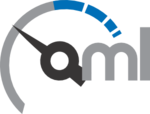| | 1 | = Getting the source = |
| | 2 | |
| | 3 | === Git Repository === |
| | 4 | The code is publicly available in a git repository. It is the one shown here. It should be reasonably stable (no rebase). You can clone it as follows. |
| | 5 | {{{ |
| | 6 | $ git clone git://git.mytestbed.net/oml.git |
| | 7 | }}} |
| | 8 | The master branch is the development branch, and might include features that are not as well tested as the release branches. |
| | 9 | |
| | 10 | We also have a staging branch, which contains additional patches to be tested before inclusion into the master branch of the public repository. This branch might be broken or otherwise defective, but it gives an insight into what's coming. Also, it allows for early code to be put out and tested. If you are running staging versions of OML, with and/or without success, let us know! |
| | 11 | |
| | 12 | Any commit to the staging branch of this repository will trigger a build on our internal Jenkins instance to make sure nothing (build or test) is broken. You might receive emails if your changes broke the build; otherwise they will start their way towards the master branch. |
| | 13 | |
| | 14 | Some other repositories might be of interest, they show up on the right-hand side of the OML repository browser, and are also available from our GitWeb instance. These repos are mostly personal development ones, but might feature the occasional early feature or fix. You can clone them using either |
| | 15 | {{{ |
| | 16 | $ git clone git://git.mytestbed.net/REPONAME.git |
| | 17 | }}} |
| | 18 | where REPONAME is the name of the project appearing in GitWeb. |
| | 19 | == OML Applications == |
| | 20 | If you want to get the source of the OML Applications, you can clone our separate applications repository in the same way. |
| | 21 | {{{ |
| | 22 | $ git clone git://git.mytestbed.net/oml-apps.git |
| | 23 | }}} |
| | 24 | Our instrumented Iperf has its own project and repository. The source can be fetched as |
| | 25 | {{{ |
| | 26 | $ git clone git://git.mytestbed.net/iperf.git |
| | 27 | }}} |
| | 28 | Make sure to work off branch oml/master, which is the instrumented tip. master is a mirror of the upstream iperf SVN. |
| | 29 | Have a look at the OML Applications sub-project page for more information. |
| | 30 | |
| | 31 | Note: if you just want to create your own applications that use OML, you don't need the source code. See Client Programming to learn how. |
| | 32 | |
| | 33 | You can then proceed to build the source or modify it and contribute your changes. |
